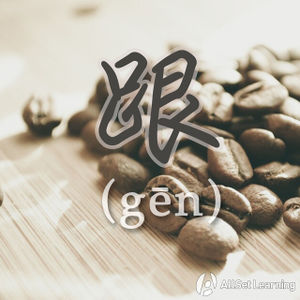Difference between revisions of "Basic comparisons with "yiyang""
| Line 4: | Line 4: | ||
Rather than expressing that two things differ regarding a particular quality, 一样 is used to express that two things are ''the same'' in some way. | Rather than expressing that two things differ regarding a particular quality, 一样 is used to express that two things are ''the same'' in some way. | ||
| − | == | + | == Basic Structure == |
The simple structure is to states that two things are equal is: | The simple structure is to states that two things are equal is: | ||
| Line 14: | Line 14: | ||
</div> | </div> | ||
| − | + | == Examples == | |
<div class="liju"> | <div class="liju"> | ||
| Line 21: | Line 21: | ||
* 啤酒 <em>和</em> 葡萄酒 <em>一样</em> 吗? | * 啤酒 <em>和</em> 葡萄酒 <em>一样</em> 吗? | ||
* 美国 <em>跟</em> 英国 不 太 <em>一样</em>。 | * 美国 <em>跟</em> 英国 不 太 <em>一样</em>。 | ||
| + | |||
</div> | </div> | ||
| − | == Specific Adjective | + | == Specific Structure Adjective == |
To add an adjective into the mix, just place it after 一样: | To add an adjective into the mix, just place it after 一样: | ||
| Line 35: | Line 36: | ||
This describes Noun 1 as being as ''adjective'' as Noun 2. | This describes Noun 1 as being as ''adjective'' as Noun 2. | ||
| − | + | == Examples == | |
<div class="liju"> | <div class="liju"> | ||
| Line 60: | Line 61: | ||
[[Category:A2 grammar points]] | [[Category:A2 grammar points]] | ||
[[Category:Comparison]] | [[Category:Comparison]] | ||
| − | {{Basic Grammar|跟|A2|N1 + 跟 + N2 + 一样 + Adj| | + | {{Basic Grammar|跟|A2|N1 + 跟 + N2 + 一样 + Adj|你 <em>跟</em> 我 <em>一样</em> 高。|grammar point|ASGC06N0}} |
{{Rel char|一样}} | {{Rel char|一样}} | ||
{{Similar|Basic comparisons with "bi"}} | {{Similar|Basic comparisons with "bi"}} | ||
Revision as of 07:25, 14 August 2012
-
Level
-
Similar to
-
Used for
-
Keywords
As well as with 比 and 没有, there is a third way to make basic comparisons: with 一样 (yīyàng).
Rather than expressing that two things differ regarding a particular quality, 一样 is used to express that two things are the same in some way.
Contents
Basic Structure
The simple structure is to states that two things are equal is:
Subject + 跟 / 和 / 像+ Noun + 一样
Examples
- 我 像 你 一样。
- 啤酒 和 葡萄酒 一样 吗?
- 美国 跟 英国 不 太 一样。
Specific Structure Adjective
To add an adjective into the mix, just place it after 一样:
Noun 1 + 跟 / 和 / 像 + Noun 2 + 一样 + Adjective
This describes Noun 1 as being as adjective as Noun 2.
Examples
- 你 跟 我 一样 高。
- 他们 和 我们 一样 酷。
- 小狗 像 小猫 一样 可爱。



